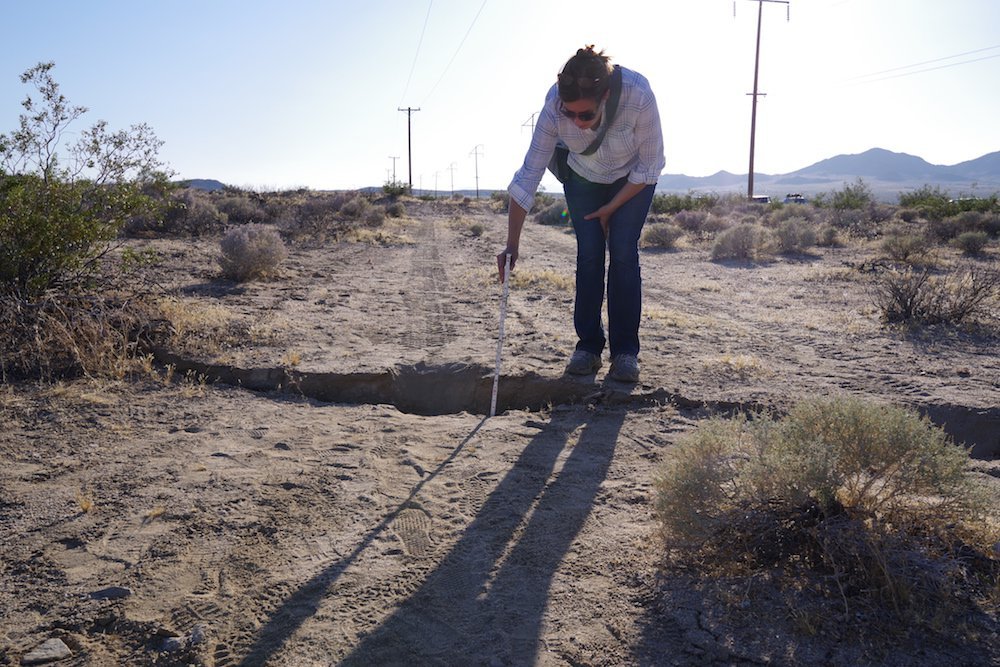Feature Stories
Faith Singer-Villalobos
Related Links
Moving Into Action
NSF-funded reconnaissance work enables breakthroughs in natural hazard response

Responding to the Searles Valley earthquakes in Southern California — a magnitude 6.4 earthquake on July 4 and a magnitude 7.1 earthquake on July 5 — natural hazards engineers and other researchers who are part of NSF’s Natural Hazards Engineering Research Infrastructure network, known as NHERI, moved into action.
Equipped with GPS trackers, digital cameras, and other measuring devices, research teams tracked important physical effects of the Searles Valley earthquakes and collected reconnaissance data to characterize damage to structures and disruptions to affected populations. These assessment reports were shared and published in the Recon Portal, a key component of NSF-NHERI’s DesignSafe cyberinfrastructure.
The researchers followed up these efforts with unmanned aerial vehicle flights to gather image data. This data was processed using Structure from Motion techniques to generate three-dimensional point clouds and digital surface models.
"The new knowledge gained by studying these events will lead to improvements in the infrastructure and public policy to continue reducing the societal impact of natural hazards."
“The Recon Portal is open to members of the public seeking authoritative details about earthquake damage and recon activities,” said Tim Cockerill, DesignSafe deputy project director and director of User Services at TACC. “Sharing this perishable data via DesignSafe very rapidly after it is collected enables the broader research community to begin their analysis and discovery much sooner. This significantly shortens the timeline for research outcomes that can prevent natural hazards from becoming societal disasters.”
Prior NSF-funded reconnaissance work has led to breakthroughs in understanding why buildings fail in a disaster, helped to improve emergency response operations, and changed how government agencies work with socially vulnerable populations.
“The new knowledge gained by studying these events will lead to improvements in the infrastructure and public policy to continue reducing the societal impact of natural hazards,” Cockerill concluded.
More information on NHERI is available at: designsafe-ci.org.

